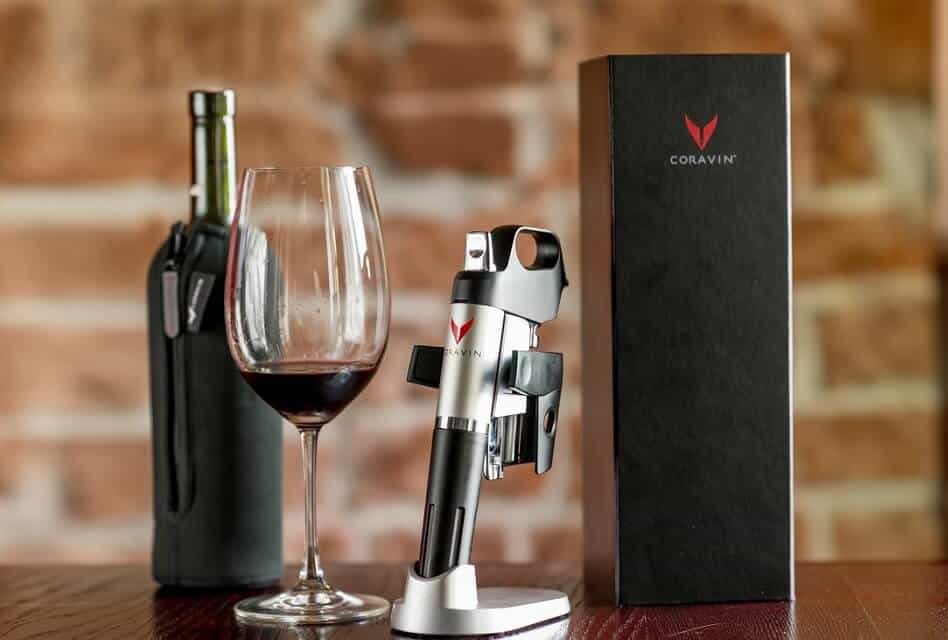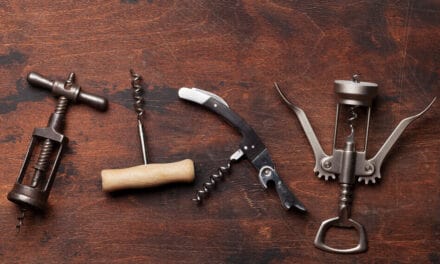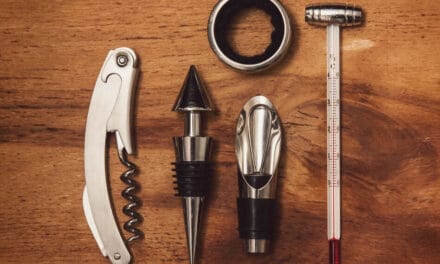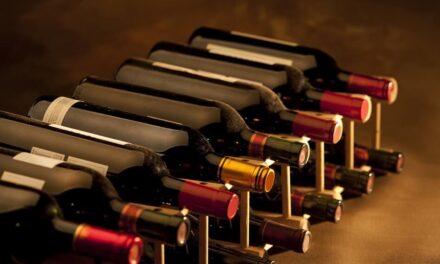Wine is a fragile beverage. After opening the bottle, it has a very short lifespan before it goes off. While you can take simple measures like recorking the bottle to increase this lifespan by a day or two, a wine preservation system can help keep your wine safe for weeks and months.
A wine preservation system is a mechanical or electric tool. It minimizes the amount of oxygen in contact with the wine after opening the bottle. As a result, the wine will not oxidize and spoil and will stay fresh significantly longer.
In this article, we will discuss the most popular devices for preserving wine, including:
- Wine Preservation Pump
- Wine Preservation Spray
- Coravin Wine Preservation and Pouring System
- Plum Wine Preservation and Pouring System
- Coravin Sparkling Wine Preservation System
HOW LONG DOES A BOTTLE OF WINE LAST WHEN OPEN?
Most wines will keep for only two to three days after opening the bottle. And this is only true if you store it properly. Otherwise, the wine can spoil and become unenjoyable.
HOW TO PRESERVE WINE AT HOME
An opened bottle of wine needs special care. If you fail to provide that, the wine will go off rapidly and turn into a vinegar-like mess. Luckily, the right conditions are easy to create:
- Reseal the bottle. You can either pull the original cork back into the bottle or use a cork stopper made from plastic or metal.
- Store the opened bottle in your fridge. For unopened bottles, a wine fridge is an optimal place. But for an opened bottle, you better choose your regular (food) refrigerator.
- Finish the wine within two to three days at the latest.
These rules are easy to follow, and they do not require a lot of special equipment. However, if you prefer to take your time instead of emptying a bottle within just a couple of days, you might want to consider buying a wine preservation system.
HOW DO WINE PRESERVATION SYSTEMS WORK?
Most wine preservation tools force the air out of the opened wine bottle by using one of two techniques:
- They either suck the air out and create a vacuum inside the bottle…
- …or they push gases like nitrogen or argon into the bottle, which create a protecting layer over the wine’s surface.
Some systems follow another approach, though: They prevent air from getting into the bottle in the first place. Typically, they inject a thin needle through the cork, suck the wine out, and dispense it via a tap. Logically, the cork does not have to be removed in this case, so the bottle stays sealed.
Mobile Tools vs. Static Systems
When it comes to mobility, there are two different types of wine preservation systems:
- Most models are mobile. You put them on top of the bottle and remove them after preparing the wine for storage. These systems are perfect if you have limited space because you can store them in a drawer. And of course, you can take them with you when traveling.
- Other wine preservation tools are static and look similar to small wine fridges. You put your bottle inside, pour the wine via the system, and leave it there until it is empty. Some models combine this preservation and dispenser function with a cooling feature. So they not only protect your wine from oxygen but also keep it at the optimal temperature. On the downside, static systems need more space, and traveling with them is uncomfortable.
DO YOU NEED A WINE PRESERVATION SYSTEM?
Wine preservation and pouring systems come in different variations, and some are pretty expensive. Whether the investment is worth it for you strongly depends on your wine habits. If you match the following criteria, you should consider buying a wine preservation system:
- if you open a bottle, you typically do not finish it on the same day
- you typically buy costly, high-quality wines
- you live with a partner who has an entirely different taste in wine than you do
- you often host guests that have different tastes in wine
On the other hand, a wine preservation system does not make much sense if you tend to finish an open bottle the same day and have a very similar taste to your friends and family.
WHAT IS THE BEST WINE PRESERVATION SYSTEM?
Which system is best for you depends on your needs, available space, and budget. The following paragraphs will discuss the most popular wine preservation systems, including their pros and cons.
Wine Preservation Pump
A wine preservation pump is the easiest-to-use tool for preserving wine. It is a mechanical device that you place on top of the wine bottle. Then, you pull the handle multiple times to suck the air out of the bottle and create a vacuum inside.
The pump only works if you combine it with the proper bottle stoppers. Their shape fits the pump ideally, and as soon as you put it on top, they will let air pass through. But when removing the pump, they will be airtight. While at least one or two stoppers come with every pump, you can buy additional stoppers separately to preserve multiple bottles simultaneously.
PRO:
- easy to transport
- unlimited uses
- affordable price
CON:
- requires some manual work
- not usable for sparkling wines
Make sure not to confuse the wine preservation pump with an air pump bottle opener. It also is a mechanical device, but its purpose is not to remove air from an opened bottle. Instead, it pumps air into an unopened bottle to force the cork out.
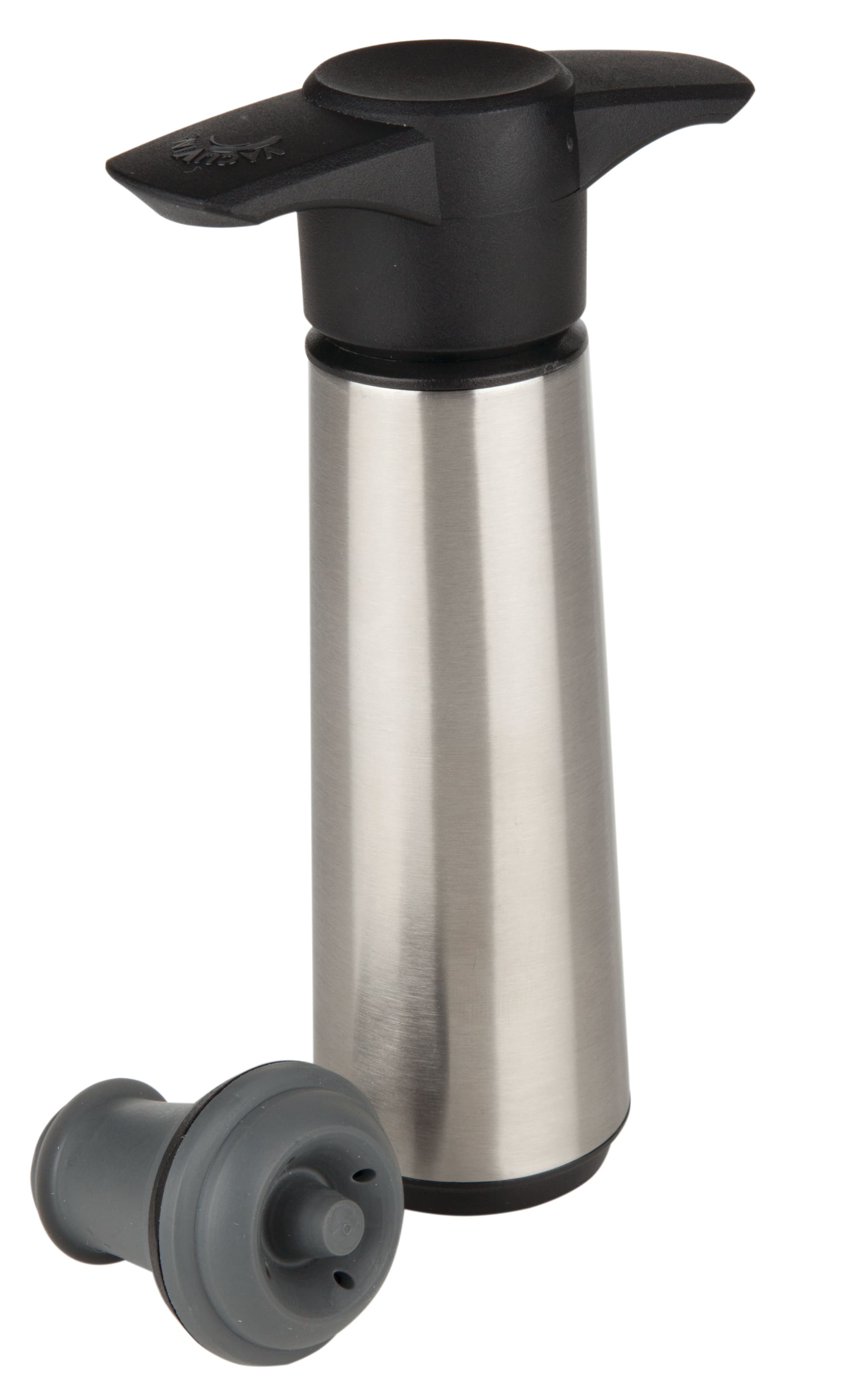
Vac Vin Stainless Steel Wine Saver
$24.99
from: Wine.com
Wine Preservation Spray
A wine preservation spray follows another approach than vacuum pumps. Instead of sucking the air out, you use it to pump gas into the bottle. The gas can be purely argon or a mix of argon, carbon dioxide, and nitrogen. In any case, it is heavier than regular air. Thus, they sink, form a shield that sits right above the wine, and shield it from the air that contains oxygen.
A can of wine preservation spray usually comes with a thin hose that makes it easier to pump the gas into the bottleneck. After injecting it, you have to reseal the bottle with a bottle stopper.
- easy to use
- easy to transport
- affordable price
- limited uses (about 20-25 uses per can)
- some wine lovers claim to sense unpleasant changes in wine aromas after applying the spray
Coravin Wine Preservation and Pouring System
Coravin is probably the best-known brand in wine preservation tools. The highly sophisticated Coravin systems are the standard because they combine easy wine dispensing with safe wine preservation.
You place the device on top of your wine bottle, and the integrated needle cuts through the cork. Now, you can pour wine as you would with an uncorked bottle by pushing the system’s top button.
As you pour, the system automatically floats the bottle with argon gas so that no potentially harmful oxygen can get in touch with the remaining wine. After enjoying your wine, you can put the still-sealed bottle back into your wine fridge and enjoy the rest in the future.
With the matching Coravin caps, the systems also work with bottles that are sealed with screw caps. The newest models come with LEDs and an app to connect to your Coravin device via Bluetooth. You can then use the app to control the pouring speed and check the battery and the gas status.
- cork will stay inside the bottle
- easy to use
- easy to transport
CON:
- argon capsules have limited uses (15 to 20 glasses per capsule)
- some parts, like the needle, wear off over time and might need replacement
- not usable for sparkling wines
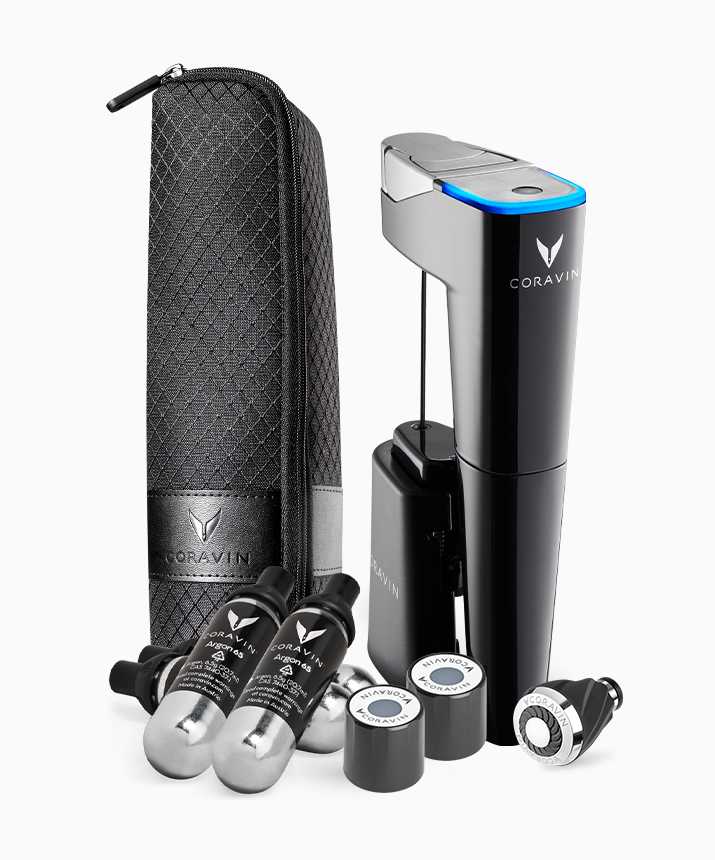
Coravin Timeless Eleven
$499.00
from: Coravin.com
Plum Wine Preservation and Pouring System
The Plum wine preservation system takes wine technology even one step further. You can put up to two bottles of wine into this device. Like the Coravin system, the Plum system injects a needle through their corks. Like a beer keg, you can pour the wine from a tap, and the system floats the bottle with argon gas. In addition to shielding the wine from oxygen, it also chills it, prolonging its lifespan to 90 days.
A unique feature is the device’s scanner. It reads the bottle labels and shows the wine’s name, varietal, and origin on a big HD display. Via the touch screen, you can then comfortably select which of the two wines you want to pour and how much.
The Plum wine preservation system is available as a standalone countertop version and an integrated device to build into a counter. Be aware that both models need power, so place them near a power socket.
PRO:
- easy to use
- holds two different bottles
- automatic pouring
- wine cooling function
- HD touch display with additional information about wines
- the gas container has enough argon to pour about 150 bottles of wine
CON:
- static and bulky
- expensive
- not usable for sparkling wines
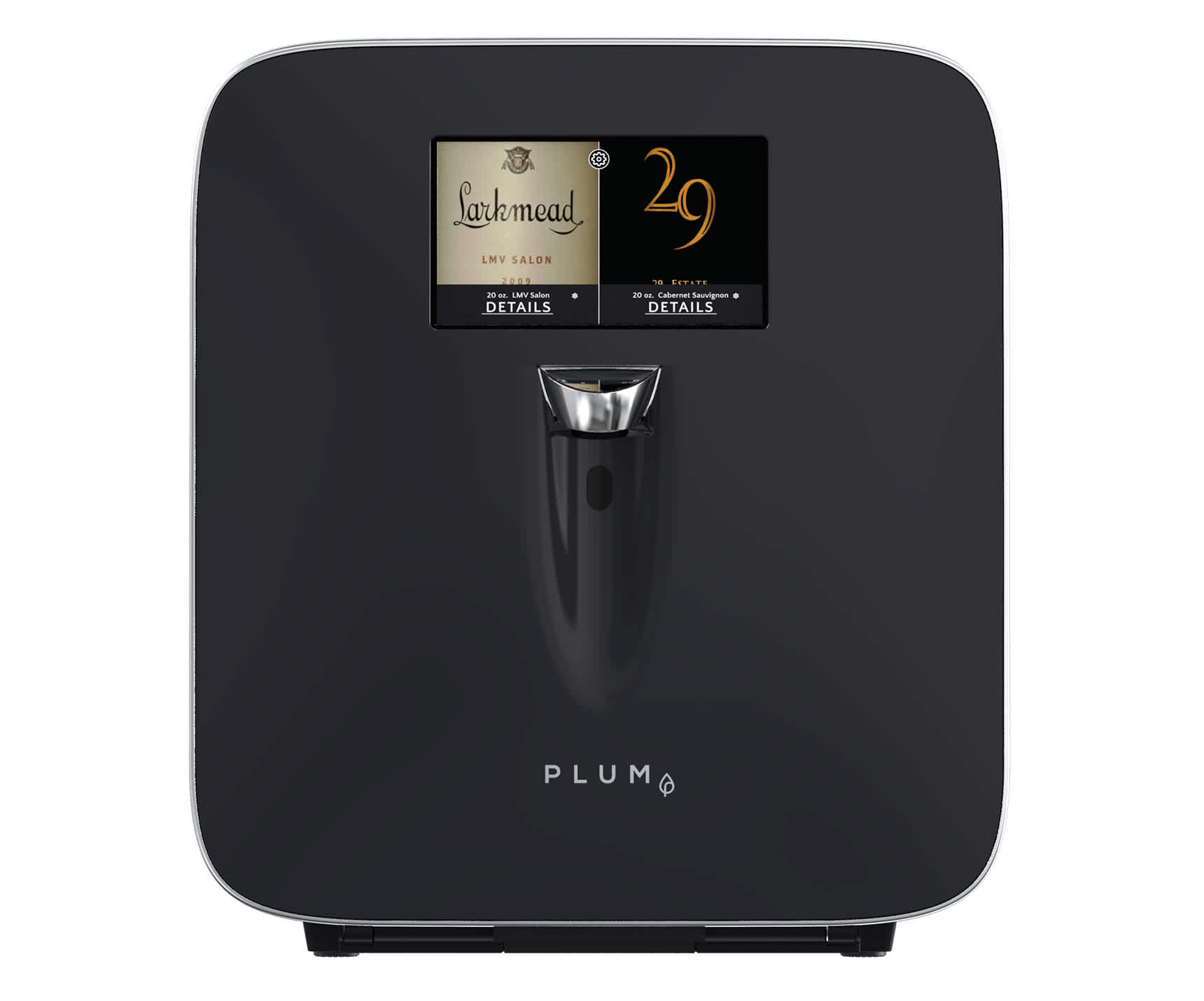
Plum Wine Dispenser
$2,499.00
from: Coravin.com
Coravin Sparkling Wine Preservation System
Sparkling wine is even more fragile than still wine because its delicate bubbles disappear quickly after opening the bottle. Thus, Coravin developed a special sparkling wine preservation system. It consists of two parts:
- A massive bottle stopper that fits all bottle sizes from half bottle to magnum. It seals the bottle and keeps the carbon dioxide inside, so the wine stays fresh and crisp.
- A sparkling charger that you can attach to the bottle stopper. It contains a capsule that releases pure carbon dioxide via the stopper into the bottle. This carbon dioxide creates a protective layer that shields the sparkling wine from oxygen and prevents its bubbles from escaping.
The Coravin sparkling wine preservation system preserves sparklers for up to four weeks after opening the bottle. And by buying additional bottle stoppers, you can keep as many bottles as you wish fresh at the same time.
PRO:
- easy to use
- easy to transport
- works perfectly with sparkling wines
CON:
- carbon dioxide capsules have limited uses (7 bottles per capsule)
- doesn’t work with still wines
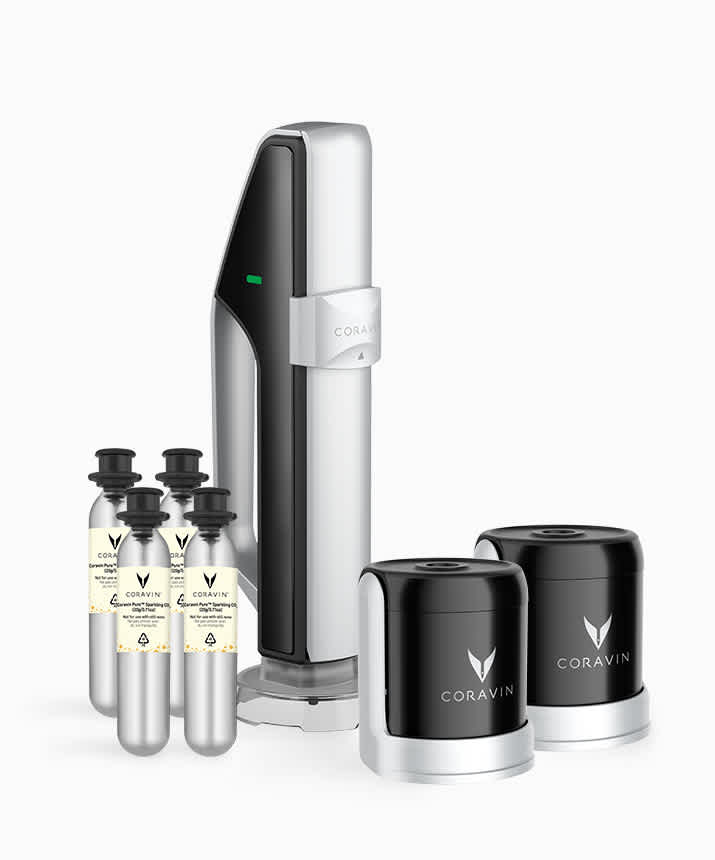
Coravin Sparkling
$399.00
from: Coravin.com
FINAL WORDS
Nothing is more annoying than dumping a good wine because it went off. With a wine preservation system, you can minimize the risk of this annoyance. And although the investment can be significant, it is worth it, especially if you are into expensive wines.

